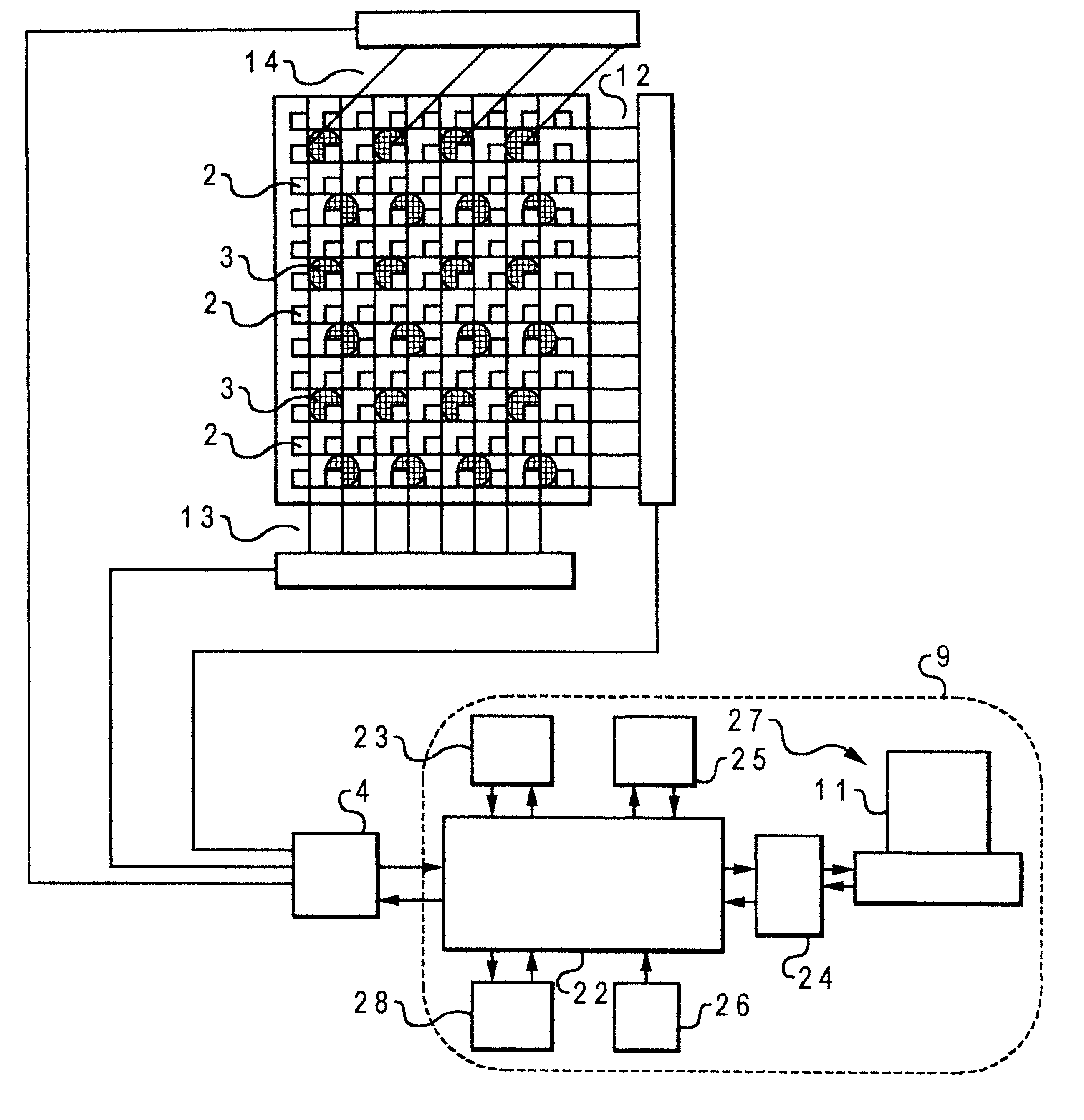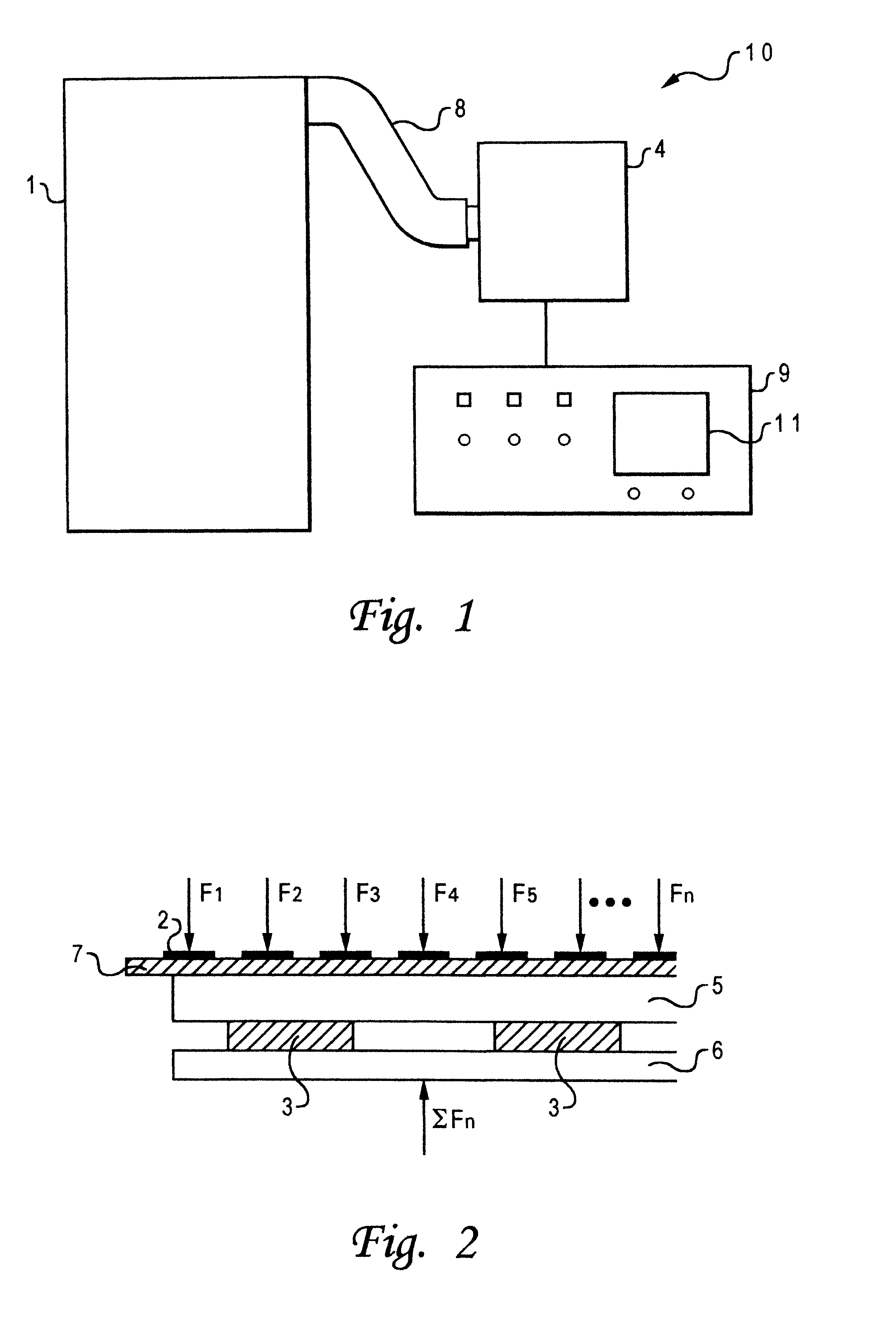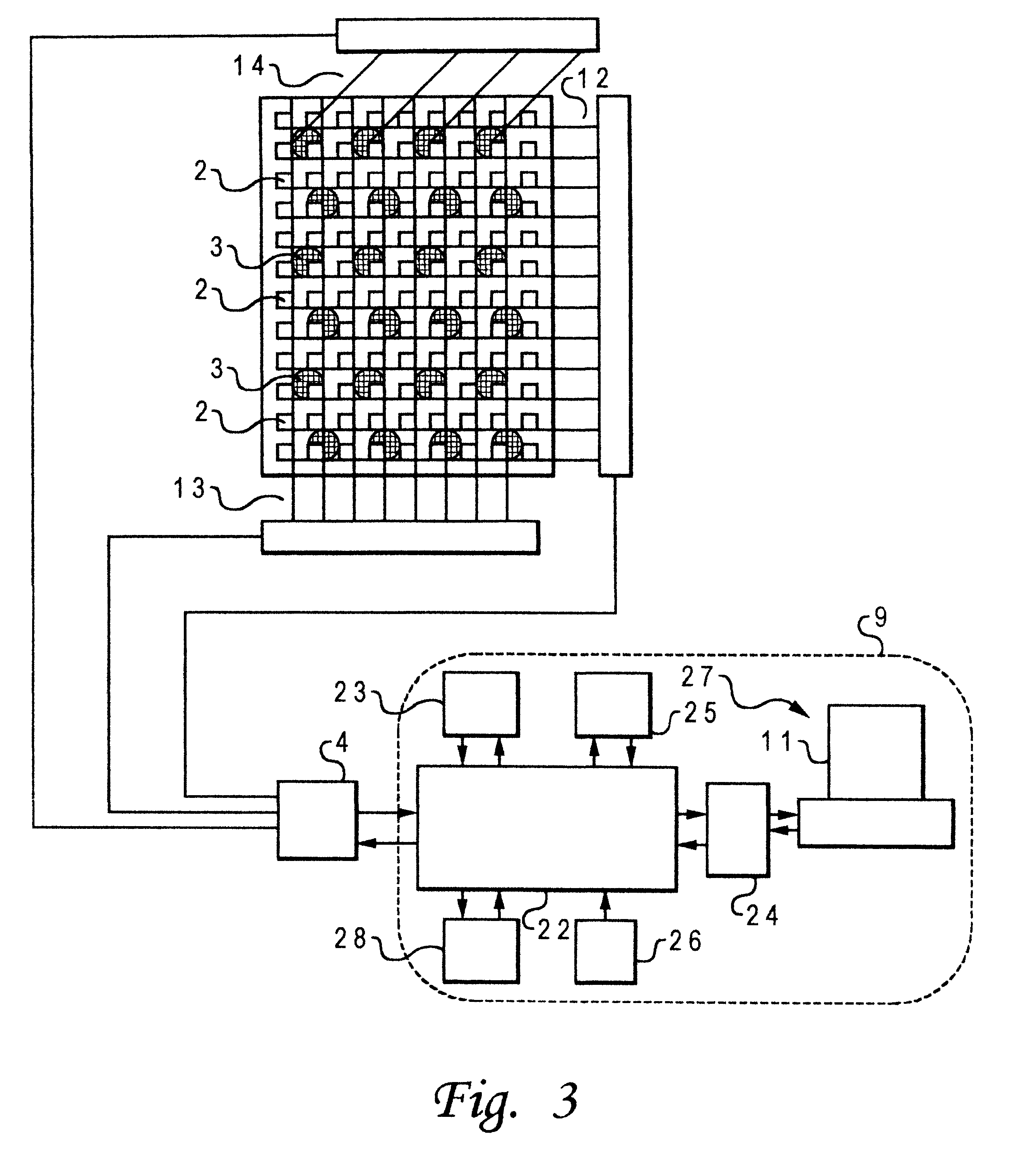Apparatus and method for measuring the pressure distribution generated by a three-dimensional object
a three-dimensional object and apparatus technology, applied in the field of apparatus and method for measuring the pressure distribution generated by a three-dimensional object, can solve the problems of reducing the electrical resistance of the sensor, prone to inaccurate readings of the pneumatic and hydraulic sensor, and disadvantageous sensors
- Summary
- Abstract
- Description
- Claims
- Application Information
AI Technical Summary
Benefits of technology
Problems solved by technology
Method used
Image
Examples
Embodiment Construction
The present invention will be described in the following mainly with respect to a device for measuring the pressure and / or force on the feet of human beings or animals during walking, running, jumping or standing. The invention is not limited thereto but may be used for the measurement of the pressure distribution generated by any three-dimensional object. Further, the present invention will be described mainly with respect to the use of an array of resistive force sensors, but the present invention is not limited thereto. Alternative force sensing devices may be used, for instance capacitive or inductive force sensing devices. Further, the present invention will be described mainly with respect to the use of piezo-electric sensors as the second sensing device for measuring the total force on the intermediate plate. The present invention is not limited thereto but includes other force or pressure sensing devices, in particular strain gauge and piezo-resistive force sensing devices w...
PUM
| Property | Measurement | Unit |
|---|---|---|
| weight | aaaaa | aaaaa |
| pressure distribution | aaaaa | aaaaa |
| total force | aaaaa | aaaaa |
Abstract
Description
Claims
Application Information
 Login to View More
Login to View More - R&D
- Intellectual Property
- Life Sciences
- Materials
- Tech Scout
- Unparalleled Data Quality
- Higher Quality Content
- 60% Fewer Hallucinations
Browse by: Latest US Patents, China's latest patents, Technical Efficacy Thesaurus, Application Domain, Technology Topic, Popular Technical Reports.
© 2025 PatSnap. All rights reserved.Legal|Privacy policy|Modern Slavery Act Transparency Statement|Sitemap|About US| Contact US: help@patsnap.com



